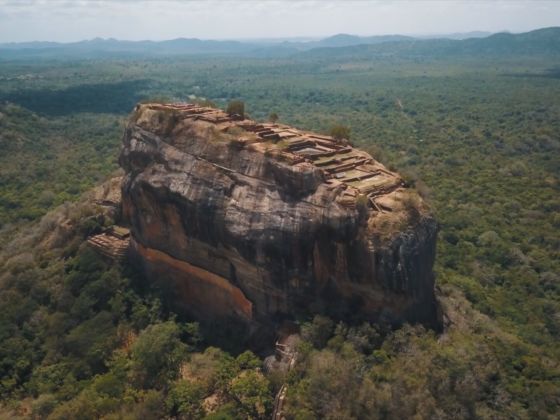The ancient city fortress of Sigiriya is built on top of a massive 200-meter-high monolithic rock in the Matale District Central Province of Sri Lanka. Dating back to the 5th century, the stone fortress was constructed by King Kasyapa to avoid attacks from his brother Moggallana, the rightful heir.
The name Sigiriya originates from the Sinhalese word Sihagri, which translates to Lion Rock. About halfway up the ascent of the rock, Kasyapa built a giant lion gateway which is where the name derives. Kasyapa had selected this site for the new capital of Sri Lanka, and it remained so until he was defeated in 495CE. The capital and the palace were abandoned after his death, and today all that remains are ruins. That said, it is still one of the best architectural examples of urban planning. In 1982 it was designated a UNESCO World Heritage Site — some say it’s the eighth wonder of the world — and is the most popular tourist attraction in Sri Lanka.
